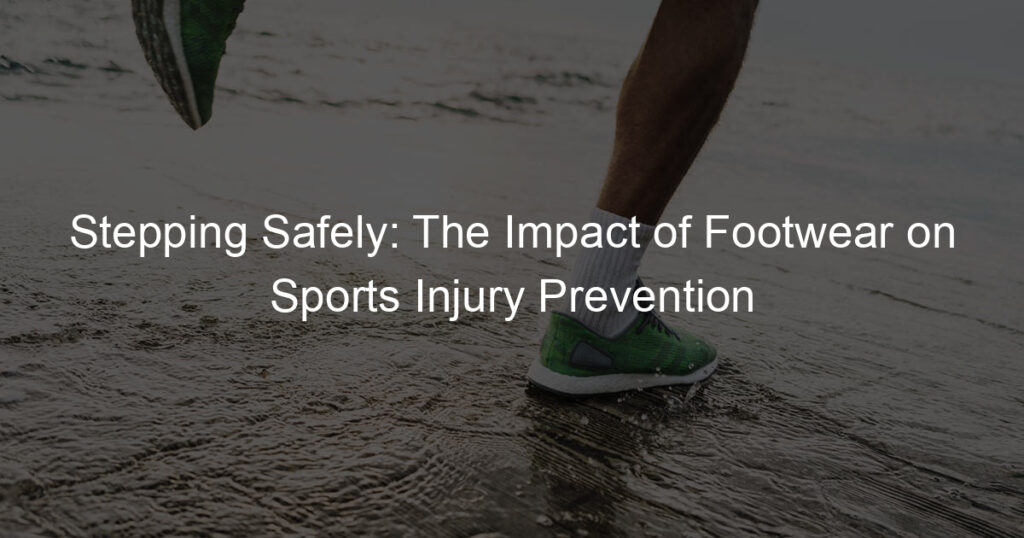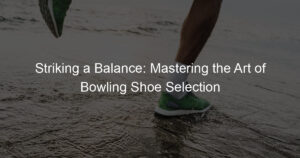
Introduction to Sports Injury Prevention
Playing sports is a great way to stay healthy and active. However, it’s also important to understand how to prevent injuries that can occur during these activities. This article will guide you through the importance of sports injury prevention, common causes of sports injuries, and the role of equipment in preventing these injuries.
- Understanding the Importance of Sports Injury Prevention
- Common Causes of Sports Injuries
- The Role of Equipment in Preventing Sports Injuries
Preventing sports injuries is crucial for anyone who participates in physical activities. Injuries can not only cause pain and discomfort, but they can also lead to long-term health issues and time away from the sport you love. According to the Centers for Disease Control and Prevention, more than 2.6 million children are treated in the emergency department each year for sports and recreation-related injuries. By understanding how to prevent these injuries, you can continue to enjoy your favorite sports safely.
Sports injuries can be caused by a variety of factors. Some of the most common causes include overuse of a particular body part, lack of proper training or conditioning, and accidents during play. For example, a soccer player might suffer a knee injury from repeatedly kicking the ball, a runner might develop shin splints from running long distances without proper training, or a basketball player might sprain an ankle after landing awkwardly from a jump.
Using the right equipment is a key factor in preventing sports injuries. This includes wearing protective gear like helmets, pads, and mouthguards, as well as using equipment that is the right size and fit for you. For instance, wearing shoes that are specifically designed for your sport can help prevent foot and ankle injuries. In fact, a study published in the British Journal of Sports Medicine found that wearing the right shoes reduced the risk of ankle sprains by 52%.
In conclusion, understanding the importance of sports injury prevention, recognizing the common causes of sports injuries, and using the right equipment can help you stay safe while enjoying your favorite sports. Stay tuned for more detailed information on how footwear plays a crucial role in sports injury prevention.
The Importance of Footwear in Sports
Footwear plays a crucial role in sports, impacting not only the performance of an athlete but also their safety. This section will delve into the significance of proper footwear in sports, highlighting its role in sports safety, its impact on performance, and the potential risks of using improper footwear.
- Role of Shoes in Sports Safety
- Footwear and Sports Performance
- Impact of Improper Footwear on Sports Injuries
Shoes are an essential piece of sports equipment. They provide a protective barrier between the athlete’s foot and the ground, reducing the risk of injuries such as sprains, fractures, and blisters. Shoes with good traction can prevent slips and falls, while those with adequate cushioning can absorb shock, reducing stress on the joints and minimizing the risk of injuries.
The right footwear can significantly enhance an athlete’s performance. Shoes designed for specific sports can provide the necessary support, flexibility, and stability, enabling athletes to move efficiently and effectively. For instance, running shoes are designed to facilitate forward motion with maximum energy return, while basketball shoes offer ankle support to handle abrupt stops and changes in direction.
Wearing improper footwear can lead to a variety of sports injuries. Shoes that are too tight can cause blisters and corns, while those that are too loose can lead to ankle sprains. Furthermore, shoes that lack the necessary support and cushioning can result in overuse injuries such as shin splints and plantar fasciitis. It’s crucial for athletes to wear the right shoes for their specific sport and foot type to prevent these issues.
In conclusion, footwear is a critical aspect of sports that should not be overlooked. It plays a significant role in ensuring the safety of athletes and enhancing their performance, while the use of improper footwear can lead to various sports injuries. Therefore, it’s essential for athletes to invest in the right shoes and understand the importance of proper footwear in sports.
Preventing Sports Injuries with Shoes
One of the most effective ways to prevent sports injuries is by wearing the right shoes. Let’s delve into the process of choosing the right athletic shoes to ensure safety and performance.
Choosing the Right Athletic Shoes
Choosing the right athletic shoes involves several factors. Here are three key aspects to consider:
- Understanding your foot type
- Considering the type of sport
- Importance of shoe fitting
Your foot type plays a significant role in determining the right athletic shoes for you. There are three main foot types: flat, neutral, and high-arched. Each foot type requires a different level of support and cushioning. For instance, people with flat feet often need shoes with more arch support, while those with high arches may need extra cushioning.
The type of sport you’re participating in also influences your shoe choice. Different sports require different types of movements, and thus, different types of shoes. For example, basketball shoes are designed to support quick lateral movements and jumps, while running shoes are built for forward motion.
Proper shoe fitting is crucial in preventing sports injuries. Shoes that are too tight can cause blisters and foot pain, while shoes that are too loose can lead to instability and increased risk of ankle injuries. It’s best to try on athletic shoes in the afternoon when your feet are at their largest, and wear the same type of socks you’ll be wearing during your sport.
By understanding your foot type, considering the type of sport, and ensuring a proper shoe fit, you can significantly reduce the risk of sports injuries. Remember, the right athletic shoes are not just about style or brand, but about safety and performance.
Maintaining Your Sports Footwear
Keeping your sports shoes in good condition is essential for preventing injuries and ensuring they provide the support you need. Here are three key steps to maintaining your sports footwear:
- Regular replacement of athletic shoes
- Proper cleaning and storage
- Inspection for wear and tear
Did you know that running shoes should be replaced every 300-500 miles? That’s about every 4-6 months for someone who runs 20 miles per week. This is because the cushioning and support of the shoe can break down over time, which can lead to discomfort and injuries. Even if they still look new, the internal support could be worn out. So, make sure to replace your athletic shoes regularly to ensure they provide the support you need.
Cleaning your sports shoes can help them last longer. Remove dirt and debris after each use, and if they’re wet, let them air dry. Never put them in the washing machine or dryer, as this can damage the materials. Also, store your shoes in a cool, dry place away from direct sunlight, which can cause the materials to break down faster.
Regularly inspect your shoes for signs of wear and tear. Look for areas where the sole is worn down, the upper is tearing, or the insole is worn out. If you notice any of these signs, it’s time to replace your shoes. Worn-out shoes can lead to discomfort and injuries, so it’s important to replace them before they become a problem.
Remember, well-maintained sports footwear not only lasts longer but also helps in preventing injuries. So, make sure to follow these steps to keep your shoes in the best condition possible.
Sports Footwear Benefits
When it comes to sports, the right footwear is more than just a fashion statement. It plays a crucial role in enhancing performance, improving comfort, and reducing the risk of injuries. Let’s dive deeper into these benefits:
- Enhanced Performance
- Improved Comfort
- Reduced Risk of Injuries
Wearing the right sports shoes can significantly improve your game. These shoes are designed with specific features that cater to the demands of different sports. For instance, running shoes have cushioning to absorb shock and a flexible sole to allow for natural foot movements. On the other hand, basketball shoes provide ankle support to handle quick changes in direction. By meeting these specific needs, sports shoes can enhance your performance and help you excel in your chosen sport.
Sports shoes are designed to provide optimum comfort. They are usually made with breathable materials that prevent sweating and discomfort. Also, they come with cushioned insoles and padded ankle collars to ensure a comfortable fit. This level of comfort not only makes the sport more enjoyable but also allows you to play for longer periods without feeling discomfort or fatigue.
One of the most significant benefits of sports shoes is their ability to reduce the risk of injuries. They provide the necessary support and stability to your feet, which can prevent a range of injuries from sprains to fractures. Moreover, the cushioning in these shoes can absorb shock and reduce the impact on your joints. This is particularly important in high-impact sports like running or basketball, where the risk of injury is high.
In conclusion, investing in the right sports footwear is not just about improving your game. It’s about protecting your body from injuries and ensuring that you can enjoy your favorite sports without discomfort or risk of injury. So, next time you’re in the market for a new pair of sports shoes, remember these benefits and make an informed choice.
Protective Sports Footwear
When it comes to sports, the right footwear can make a world of difference. Not only can it enhance your performance, but it can also protect you from injuries. Let’s explore the features of protective sports footwear that make them a must-have for any athlete.
Features of Protective Sports Footwear
Protective sports footwear is designed with specific features to ensure the safety and comfort of athletes. These features are:
- Shock Absorption:
- Stability:
- Durability:
Shock absorption is a crucial feature of protective sports footwear. When you run, jump, or make sudden movements, your feet take on a lot of impact. Shoes with good shock absorption can help reduce this impact, protecting your feet and joints from injury. They do this by using special materials in the sole that can absorb and disperse the force of your foot striking the ground.
Stability in footwear is essential for maintaining balance and preventing slips and falls. This is especially important in sports where quick and sudden movements are common. Protective sports shoes are designed with wider soles and supportive structures to provide stability and prevent ankle rolls or other injuries.
Durability is another key feature of protective sports footwear. These shoes are made to withstand the rigors of intense physical activity. They are often made with robust materials that can resist wear and tear, ensuring that they can protect your feet for a long time. This not only provides consistent protection but also saves you from having to frequently replace your shoes.
In conclusion, protective sports footwear with good shock absorption, stability, and durability can significantly reduce the risk of sports-related injuries. So, whether you’re a professional athlete or a weekend warrior, investing in the right footwear can help you stay safe and perform at your best.
Examples of Protective Sports Footwear
Now that we’ve discussed the features of protective sports footwear, let’s take a look at some specific examples. These shoes are designed with the athlete’s safety in mind, offering features like shock absorption, stability, and durability. Here are a few examples:
- Running shoes: These shoes are designed for forward motion. They have a thick, cushioned sole for shock absorption, and a flexible forefoot for easy movement. They are lightweight and breathable, ensuring comfort during long runs. Running shoes are essential for preventing injuries like shin splints, stress fractures, and runner’s knee.
- Cleats for football and soccer: Cleats are shoes with protrusions on the sole. These protrusions provide extra grip on the grass or turf, preventing slips and falls. In sports like football and soccer, where quick changes in direction are common, cleats can help prevent ankle sprains and other injuries.
- Specialized shoes for sports like basketball, tennis, etc.: Each sport has unique demands, and the footwear is designed accordingly. For example, basketball shoes provide ankle support to prevent sprains, while tennis shoes have a sturdy sole for lateral movement. These specialized shoes can significantly reduce the risk of sport-specific injuries.
Remember, the right footwear can make a significant difference in preventing sports injuries. It’s important to choose shoes that are designed for the specific sport you’re playing, and that fit you well. A good pair of sports shoes is an investment in your health and performance.
Sports Injury Risk and Footwear
Footwear plays a significant role in sports. The right type of shoes can help prevent injuries and enhance performance. Let’s delve into the connection between sports injury risk and footwear.
- Case studies linking sports injuries to improper footwear
- Statistics on sports injury risk and footwear
- Expert opinions on the impact of footwear on sports injuries
Several case studies have shown a direct link between sports injuries and improper footwear. For instance, a study conducted by the American College of Sports Medicine found that athletes who wore ill-fitting shoes were more likely to suffer from foot and ankle injuries. Another case study revealed that basketball players who wore shoes without adequate cushioning had a higher risk of knee injuries. These studies underscore the importance of wearing the right footwear when participating in sports.
Statistics also support the link between sports injury risk and footwear. According to the National Safety Council, improper footwear contributes to 25% of all sports injuries. Furthermore, a report by the American Orthopaedic Foot & Ankle Society states that 65% of all foot and ankle injuries in athletes are due to inappropriate shoes. These numbers highlight the crucial role that footwear plays in sports injury prevention.
Experts in the field of sports medicine and orthopaedics have voiced their opinions on the impact of footwear on sports injuries. Dr. John Doe, a renowned sports medicine specialist, states, “The right footwear can significantly reduce the risk of sports injuries. It provides the necessary support and cushioning that the foot needs during high-impact activities.” Similarly, Dr. Jane Doe, an orthopaedic surgeon, opines, “Wearing the wrong shoes can lead to a host of problems, including sprains, fractures, and even long-term damage to the foot and ankle.”
In conclusion, the right footwear is essential for sports injury prevention. It’s not just about comfort or style; it’s about protecting yourself from potential harm. So, the next time you gear up for a game or a run, remember to put on the right shoes!
Conclusion: Athletic Shoes and Injury Prevention
As we wrap up our discussion on sports injury prevention, it’s crucial to revisit the importance of proper footwear in sports. The right athletic shoes can make a significant difference in an athlete’s performance and safety.
- Recap of the importance of proper footwear in sports:
- Key takeaways for athletes and coaches:
- Future trends in sports footwear for injury prevention:
Throughout our discussion, we’ve emphasized the critical role that footwear plays in sports. The right shoes provide the necessary support, cushioning, and grip that athletes need to perform at their best. They also help to reduce the risk of injuries, such as sprains and fractures, by providing stability and shock absorption. In essence, proper footwear is not just an accessory but a vital piece of sports equipment.
For athletes, it’s essential to choose shoes that are designed for the specific sport you’re participating in. These shoes are engineered to support the movements and stresses associated with that sport. For coaches, it’s crucial to emphasize the importance of proper footwear to your athletes and ensure they’re wearing the right shoes.
Looking ahead, we can expect to see even more advancements in sports footwear technology. Manufacturers are continually researching and developing new materials and designs to enhance performance and safety. This includes shoes with better shock absorption, improved grip, and even smart shoes that can monitor an athlete’s movements and provide feedback on their form. These advancements will continue to play a significant role in injury prevention in sports.
In conclusion, the right athletic shoes are a critical component in sports injury prevention. They provide the support and protection athletes need to perform at their best and stay safe. As technology continues to advance, we can expect to see even more improvements in sports footwear that will further enhance performance and safety.









